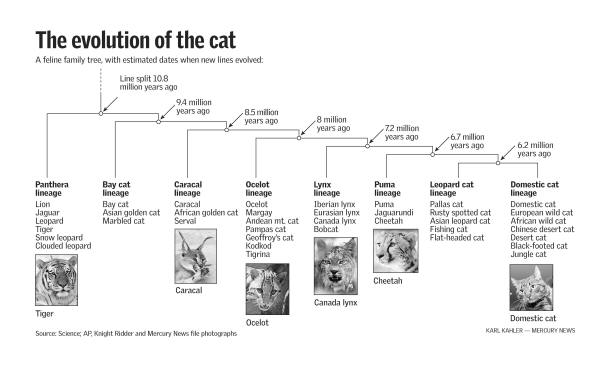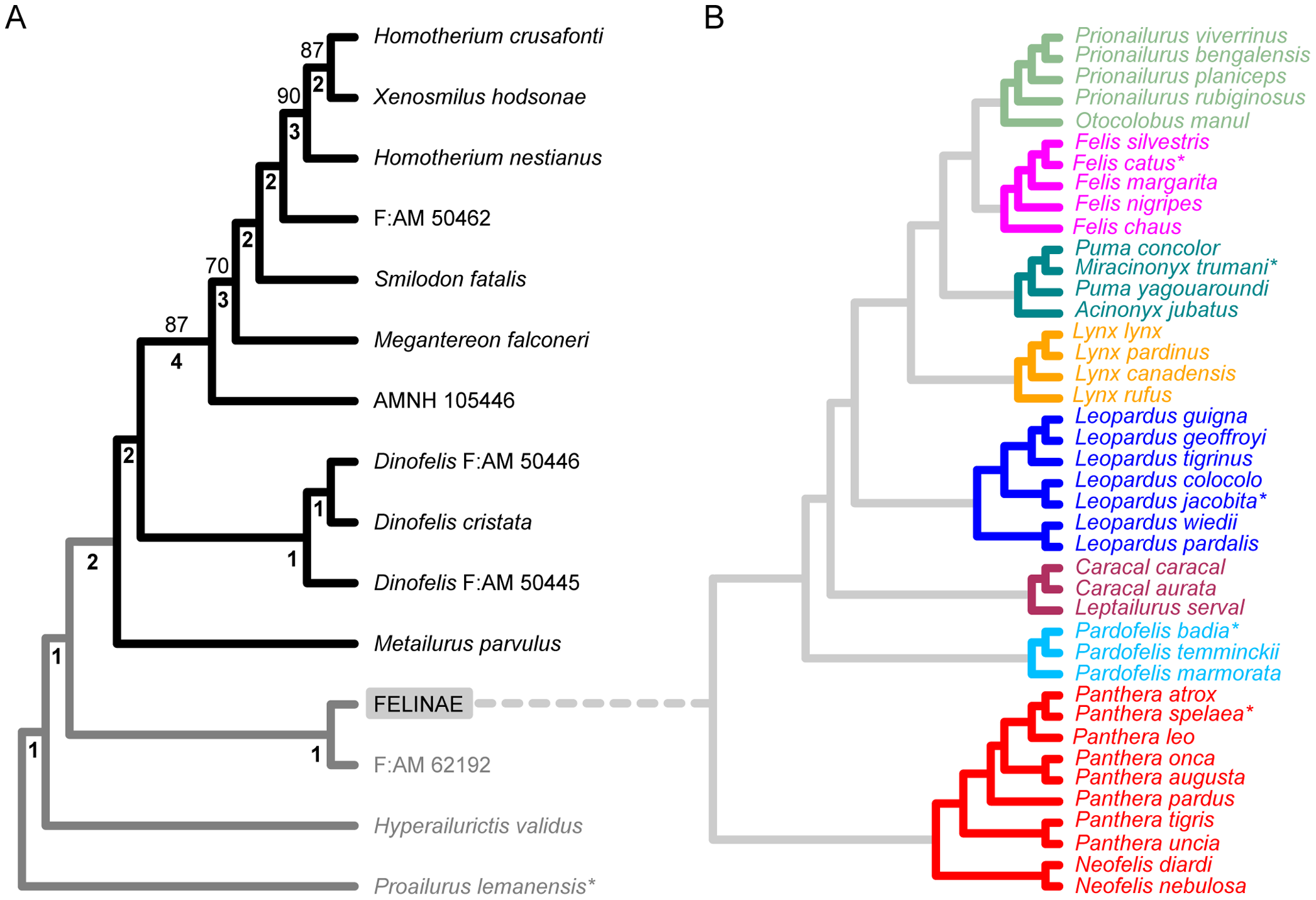Classification
Domain: Eukarya
The Leopard Cat belongs to the domain Eukarya because it is a multicellular organism.
Kingdom: Animalia
The Leopard Cat belongs to the Kingdom Animalia because it is a living organism with many tissue types and other things that make it an animal.
Phylum: Chordata
The Leopard Cat belongs to the Phylum Chordata because it has a notochord - the trait all Chordates share.
Class: Mammalia
The Leopard Cat belongs to the Class Mammalia because it is warm blooded, bears its young live, and shares many other traits with mammals.
Order: Carnivora
The Leopard Cat belongs to the Order Carnivora because it only eats other animals - the trait all Carnivores share
Family: Felidae
The Leopard Cat belongs to the Family Felidae along with its fellow cat organisms.
Genus: Prionailurus
Species: Prionailurus bengalensis
Prionailurus bengalensis means a type of small cat found in the Bay of Bengal area.
The Leopard Cat was later found to inhabit a much larger area than just the Bay of Bengal area.

Figure 1. Evolution of the cat into several lineages.
In Figure 1, you can see how the Leopard Cat relates to its "recent" relatives. This tree has a timeline so you can really see when certain species developed.

Figure 2. A phylogenetic tree of cats.
This tree shows how the Leopard Cat fits in with its fellow cats, and where the family Felidae fits in with some other species.
Taxonomy: The Leopard Cat has been the subject for taxonomic debate for a long time. Originally, it was thought there was one species that was found in the Bay of Bengal area - thus the bengalensis species name. But as time went on, more and more subspecies were discovered. There are many scientists who argue they should be separate species, but right now, they are still subspecies. As of now, there are twelve known subspecies of the Leopard Cats.
This page was made by Josh Barbara.
Click here to learn about where the Leopard Cat lives!
And click here to go home.